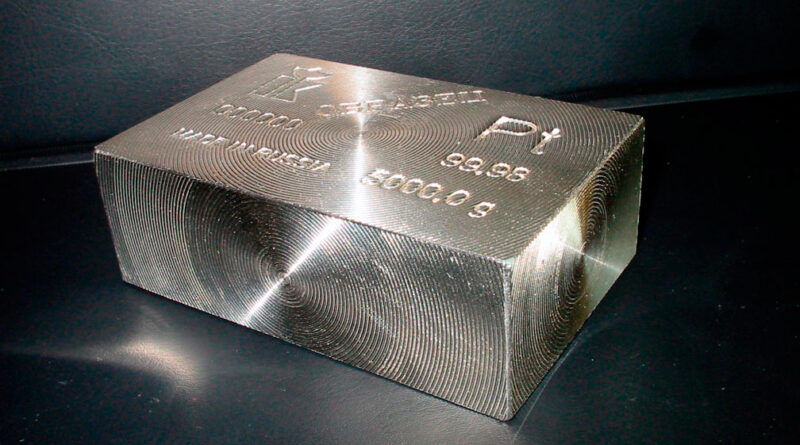Platinum surplus forecast for 2022 revised downwards to 804 koz
The thirty-third Platinum Quarterly data set examines activity in the third quarter of 2022. It also includes an updated forecast for 2022 and a first forecast for 2023.
The market is forecast to be in a deficit of 303 koz in 2023 as global platinum demand is expected to increase by 19% (to 7,770 koz) while supply will increase by just 2% (to 7,466 koz).
Supply constraints, combined with increased bar and coin demand, have seen the market surplus forecast for 2022 revised downwards by 17% (-170 koz) to 804 koz. The profound swing in market balances between the 2022 surplus and the 2023 deficit is forecast to be more than 1.1 Moz. Additionally, exceptionally strong import volumes into China continued throughout the third quarter, contributing to ongoing physical market tightness despite the global surplus. Similar to previous quarters this year, these imports were significantly above identified demand in China and were met largely by sizeable flows from platinum ETFs and exchange stocks. Year to date, these excess imports into China, which are not captured in published supply and demand data, are already 1.2 Moz – far in excess of the forecast 2022 surplus.
Considerable headwinds have resulted in another downward revision to the original forecast for total platinum supply for 2022, which is now expected to decline by 10% year-on-year. Disruption is likely to remain a feature in 2023, with the forecast up a modest 2% (+89 koz) year-on-year to 5,726 koz.
A combination of higher passenger vehicle production numbers, tighter emissions legislation for HDVs in China and India, as well as growing substitution of platinum for palladium will see a 12% (+329 koz) expected increase in platinum demand this year, to 2,964 koz. Platinum substitution for palladium is estimated to reach 340 koz in 2022, and just over 500 koz next year – more than double the figure in 2021 (240 koz). Automotive demand in 2023 is expected to increase at a similar rate to 2022, up 11% (+324 koz) to 3,288 koz.
Jewellery demand in 2022 is now forecast to remain unchanged year-on-year at 1,953 koz, with growth in Europe, North America, India and Japan not fully countering weakness in China, yet an improvement on the demand projected at the beginning of the year. For 2023, demand is expected to remain flat at 1,954 koz.
Industrial demand is forecast to decline by 14% (-341 koz) in 2022 versus record levels of demand in 2021, as a result of fewer capacity additions this year. Nevertheless, 2022 is set to be the third strongest year for platinum industrial demand on record, with 2,110 koz of demand. This trend is set to continue into 2023, which is forecast to be the second strongest year for industrial demand on record, climbing 10% to 2,316 koz, with a notable increase in demand from the glass industry.
The recent COP27 has highlighted that the need to decarbonise is more acute than ever. Green hydrogen produced by platinum-containing electrolysers and used to displace natural gas, or as an energy source in fuel cell electric vehicles, has a significant role to play in the energy transition.
While hydrogen-related platinum demand is relatively small in 2023 – of more relevance in a tight market – it is expected to grow substantially in the medium term, offering an option to investors looking for exposure in this area and further strengthening the investment case for platinum based on future demand growth. Bar and coin demand is forecast to rise by 2% (+8 koz) this year to 340 koz, which will not offset outflows from exchanges (-315 koz) and ETF liquidations (-550 koz), bringing net disinvestment to 525 koz for the year. Next year, platinum bar and coin demand is forecast to jump by 49% (+167 koz) to 507 koz, a three-year high, as manufacturers in North America and Europe allocate more capacity to platinum on weaker gold and silver demand, and net disinvestment in Japan swings to net investment. Meanwhile, outflows from exchange warehouses (-20 koz) and liquidations of ETF holdings (-275 koz) are expected to slow, resulting in net investment of 212 koz in 2023.




